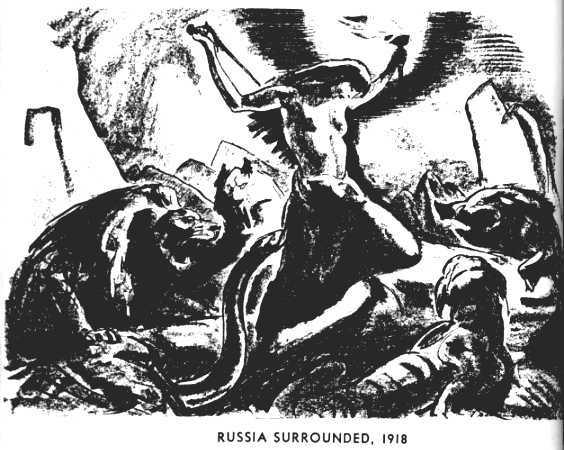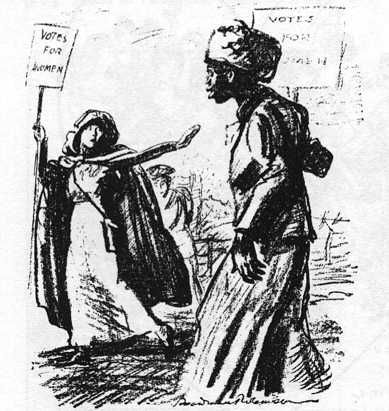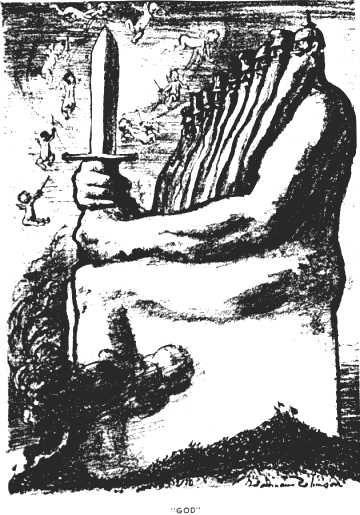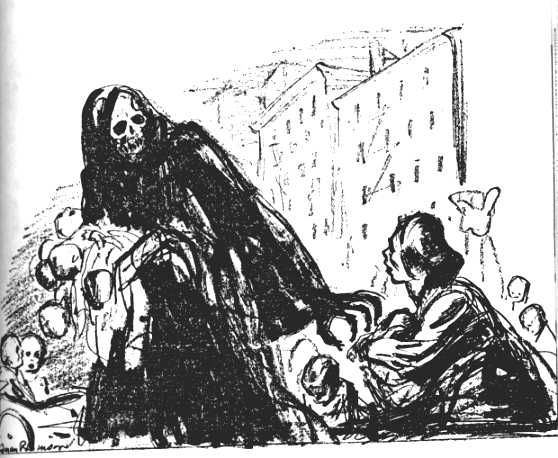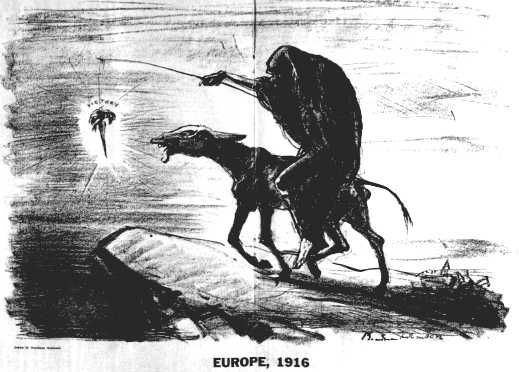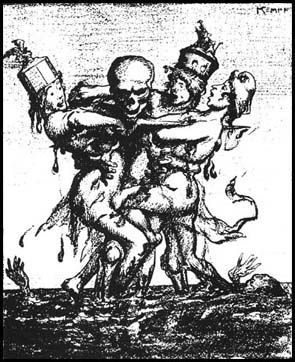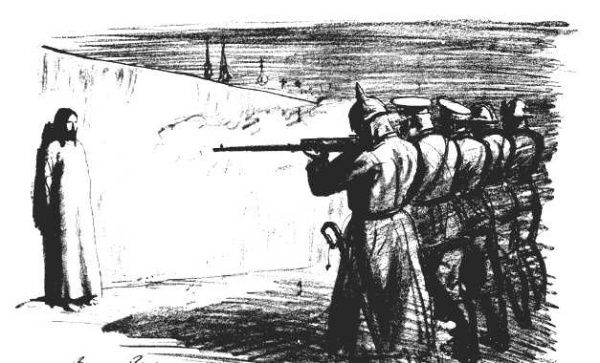Each day this month I will be profiling a notable political cartoonist. Since the choices are vast, I've decided to slim the numbers down a bit and eliminate living cartoonists. Perhaps I will do a current political cartoon stars in the future.
Here's an archive of the artists mentioned already.
Today we look at a powerful cartoonist/journalist who, like his contemporary, Robert Minor, stood up for his beliefs even when the US Government branded him a traitor.
Enjoy!
The similarities between Robert Minor and Boardman Robinson (who was born in 1876 in Nova Scotia, Canada) are striking, so first let me link you back to the entry on Robert Minor.
Like Minor, Robinson was a staunch Socialist and heavily involved in liberal causes of the day, including women's suffrage.
Robinson even had a similar stark, sparse style like Minor's - the sketchy nature of their cartoons usually had something to do with the immediacy in which they were creating.
Like Minor, Robinson said what was on his mind - whether it fit into a specific mold or not.
However, Robinson was also a very notable artist on his own terms - he just happened to coincide with Minor at more than a few points in history.
Speaking of not fitting within a prescribed mold, check out this great piece where Robinson mocks a group he specifically SUPPORTS, for what he felt to be their negative views on racial equality even while trying to gain gender equality...
What a great cartoon.
(By the by, did you know that our image files are case-sensitive? How odd is that? boardman1.jpg resulted in no image, but Boardman1.jpg worked - so silly).
Robinson was friends and worked alongside John Reed, the famed Communist who Warren Beatty portrayed in Reds.
The two went to Russia in 1914, and Russia always held a place in Robinson's heart, noted by his cartoons later on...
Robinson originally drew for the New York Times and the New York Tribune, and they allowed him to do anti-war cartoons before the United States was involved, but when they DID become involved, Robinson had to turn to the radical newspaper, The Masses, along with Minor, to continue his work.
Here's a beautifully frightening piece he wrote about America's involvement.
Crap - I misplaced the caption. Could someone find it for me?
I'll paraphrase it, for now - "Come on in, America, the War is just fine!"
Along with Minor and a few others, Robinson was arrested for treason for his anti-war cartoons, and was put on trial twice (both hung juries) before the war ended and there really was no more reason to hold them any longer.
Robinson contributed to the sequel to the Masses, The Liberator.
He then proceeded to teach for many years and also did a number of murals.
The creator of the Masses, Max Eastman, who also faced prison along with Robinson, Minor and others (including one artist we'll meet in a couple of days), had this to say about Robinson and also what is probably Robinson's most famous cartoon...
Surprisingly as it may seem, he actually introduced into America the idea, as old as Daumier, that cartoons should have the values of art as well as of meaning.
He was big, burly, bluff, sea-captain sort of character, with dancing blue eyes under bushy red brows, a red beard, and a boisterous way of "blowing in" as though out of a storm, instead of merely entering, a place of habitation. Everybody called him Mike, and I guess it must have been in memory of Michelangelo, whose fury and rapture his powerful and meaningful drawings did recall.
When Mike blew in with a picture of a white-clad, saintly Jesus standing against a stone wall facing the rifles of a brutish firing squad - "The Deserter"- I felt that number (The Masses, July, 1916) deserved a place in the history of art.
Can't really argue with Eastman there.
Thanks to Spartacus for the Eastman quote and thanks to this Marxist site for most of the cartoons featured above.

